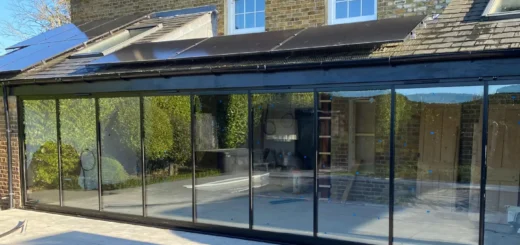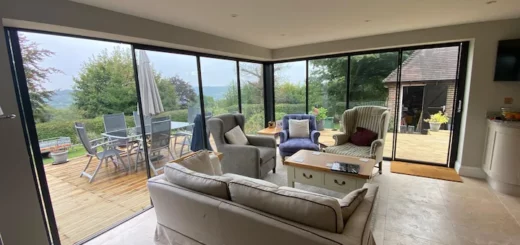Guide to Metal Sliding Doors – From Selection to Styling
Table of Contents
Types of Metal Sliding Doors
Modern metal sliding doors bring strength and slim sightlines to homes, with each material offering unique properties worth exploring in detail.
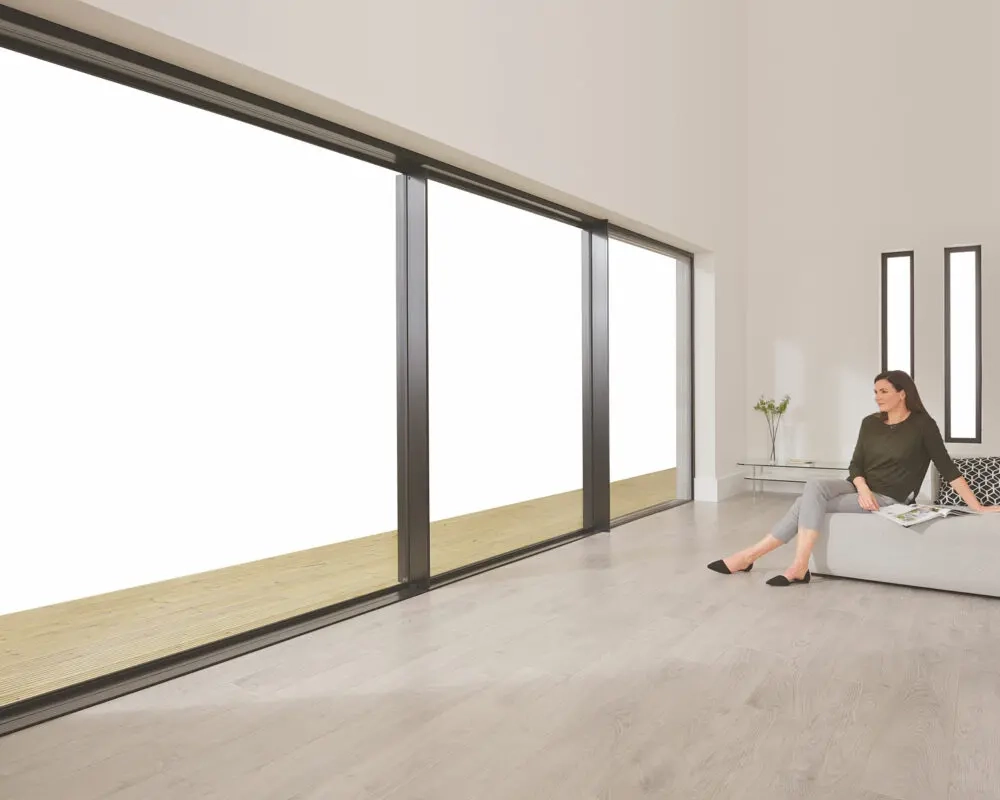
The Rise of Aluminium
Powder coated aluminium doors have largely replaced their predecessors from twenty years ago, bringing better insulation and improved strength-to-weight ratios. The material’s natural resistance to corrosion makes it particularly suitable for British weather, while modern manufacturing techniques allow for thinner frames that let in more light. British homeowners often favour aluminium for its lower price point compared to steel, coupled with minimal maintenance requirements.
Advances in thermal break technology have addressed the historical drawbacks of aluminium patio doors, particularly regarding heat loss. Manufacturing processes now incorporate polyamide strips between the internal and external faces of the frame, reducing thermal conductivity. The frames’ robust construction withstands daily use without warping or bending, even in larger sizes where traditional materials might struggle.
Steel Sliding Doors
Steel frames provide unmatched strength, allowing for the slimmest possible sightlines while supporting larger glass panels. Manufacturing processes preserve the raw character of steel while protecting against rust through galvanisation and powder coating. Unlike other materials, steel maintains its rigidity across wider spans, making it ideal for architects seeking to create glass walls.
The raw industrial quality of steel brings a distinctive look that suits both period renovations and contemporary builds. Modern coating techniques produce a range of colours beyond traditional black, though many homeowners choose to highlight steel’s natural industrial character. The material’s inherent strength allows for larger glass panels and fewer vertical mullions, resulting in clearer views and more natural light.
Composite Metal Options
Recent innovations combine different metals in single frames, taking advantage of each material’s strengths. These hybrid designs might use aluminium externally for weather resistance while incorporating steel reinforcement internally for structural integrity. The resulting frames offer excellent thermal performance without sacrificing the clean lines metal sliding doors are known for.
Manufacturers have developed new ways to bond different metals together, preventing galvanic corrosion while maintaining structural integrity. These composite systems often cost less than pure steel while offering similar strength. The combination of metals allows for more complex designs, including corners that appear to float and multi-track systems that were previously impossible with single-material construction.
Material Composition
The exact mix of metals in composite frames varies by manufacturer, with some opting for steel cores wrapped in aluminium while others use reinforced corners or joints. This variation in composition leads to differences in weight, thermal performance, and cost that buyers should weigh carefully. The best choice often depends on specific requirements like spanning distance, desired sightlines, and local weather conditions.
Material Performance and Durability
Metal sliding doors react differently to environmental stresses, making material choice a vital factor in long-term performance.
Coastal Properties and Corrosion
Salt-laden air poses unique challenges for metal sliding doors near the coast. Steel requires extra protective coatings to prevent oxidation, while aluminium naturally resists salt corrosion through its oxide layer. The proximity to the sea determines the level of protection needed – properties within 500 metres of the coastline need marine-grade finishes and regular maintenance to maintain their protective barriers.
Living by the sea doesn’t mean sacrificing style for durability. Modern glass doors now incorporate advanced coating technologies that bond directly to the metal surface, creating lasting protection against salt spray. These coatings come in textured and smooth finishes, allowing homeowners to choose between industrial and polished appearances without reducing corrosion resistance.
Weather Testing Results
British weather conditions put unique demands on metal sliding doors through constant humidity changes and repeated temperature swings. Independent testing shows aluminium frames typically outlast other materials in accelerated weather trials, particularly in urban areas where acid rain and pollution can speed up corrosion. Steel frames, while incredibly strong, require more frequent maintenance to prevent rust spots from forming at welded joints.
Testing protocols simulate decades of use by exposing door samples to concentrated salt spray, UV radiation, and temperature cycling. The results reveal how different metals age – steel develops a protective patina but needs regular inspection, while aluminium maintains its appearance with minimal intervention. Metal patio doors subjected to these tests show that proper initial treatment prevents up to 95% of weather-related issues.
Thermal Properties
The thermal efficiency of metal sliding doors depends heavily on the frame construction method. Simple metal frames conduct heat readily, but modern thermal break technology creates an insulating barrier between interior and exterior surfaces. The width and material of this barrier determine how well the door resists heat transfer.
Cold bridging through metal frames used to cause condensation problems in older installations. Contemporary systems incorporate multiple chambers within the frame profiles, trapping air to reduce heat loss. The most effective designs combine these air chambers with thermal breaks, resulting in performance that rivals traditional window materials.
Heat Loss Prevention
Advanced thermal break designs now include multiple insulating zones and low-conductivity materials. These improvements mean metal sliding glass doors no longer sacrifice warmth for style. Frame profiles incorporate specialised polymers that maintain structural integrity while blocking heat transfer, making them suitable even for north-facing installations.
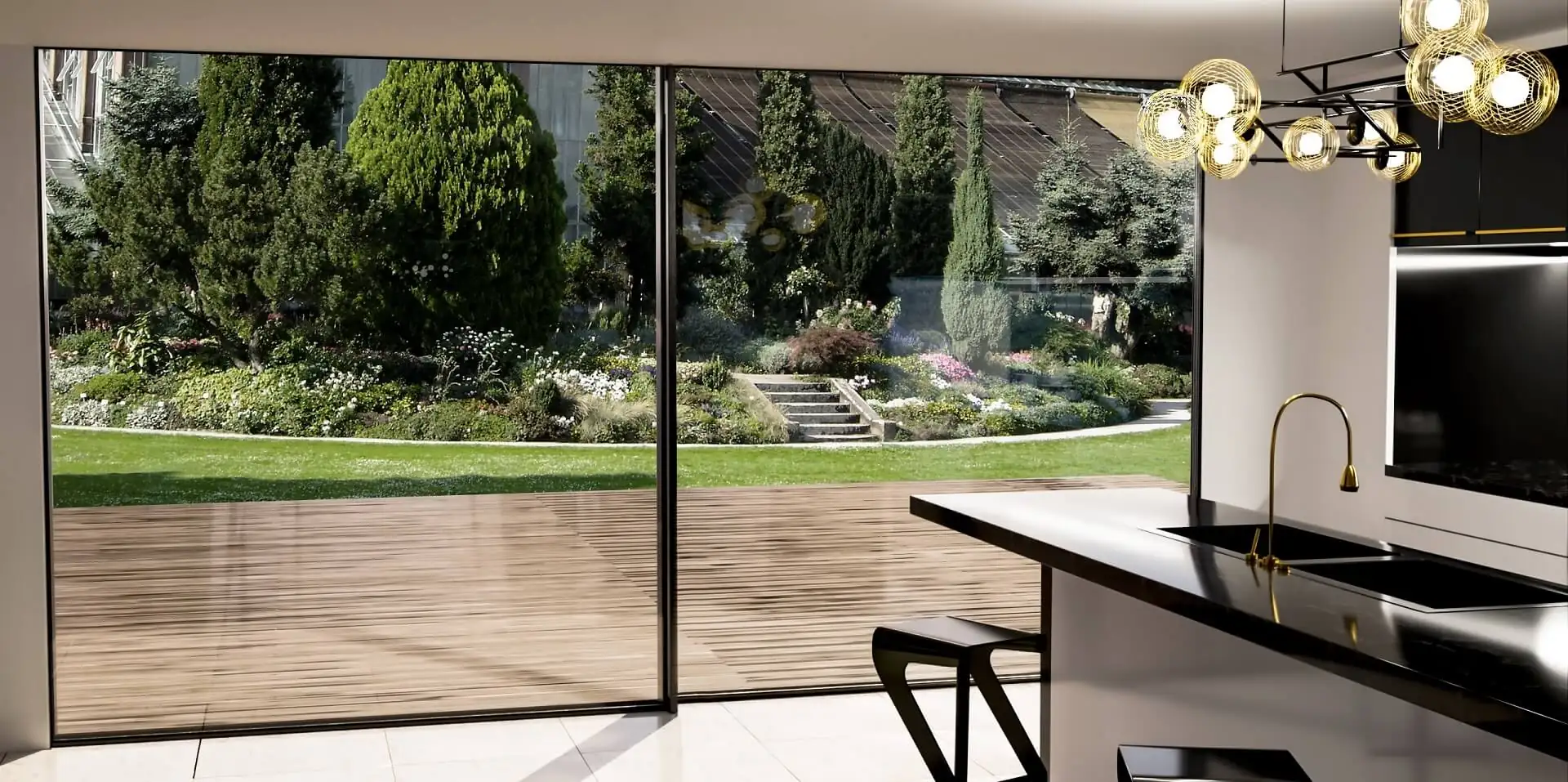
Sound Reduction
The mass of metal frames helps reduce noise transmission, particularly in steel systems where the frame weight naturally dampens vibrations. Double-glazed units mounted in metal sliding doors provide effective sound barriers when properly sealed. The combination of heavy frames and modern acoustic glass can reduce external noise by substantial margins, making these doors practical even for urban homes near busy roads.
Sound insulation quality varies with frame design and glass specification. Wider air gaps between glass panes improve acoustic performance, while laminated glass adds extra noise reduction through its dampening layer. Metal frames must be precisely engineered to prevent sound from travelling through the frame itself – quality systems use rubber gaskets and brush seals to block noise paths around the glass.
The best acoustic performance comes from metal sliding doors that combine multiple strategies: heavy-duty metal frames, laminated acoustic glass, and proper sealing systems. Frame corners receive special attention during manufacture, as these joints can create weak points in sound insulation if not properly sealed. Testing shows that well-designed systems can block as much noise as solid walls, despite their large glass areas.
Design Features of Metal Sliding Doors
The structural properties of metal frames allow for designs that push architectural boundaries while maintaining security and performance.
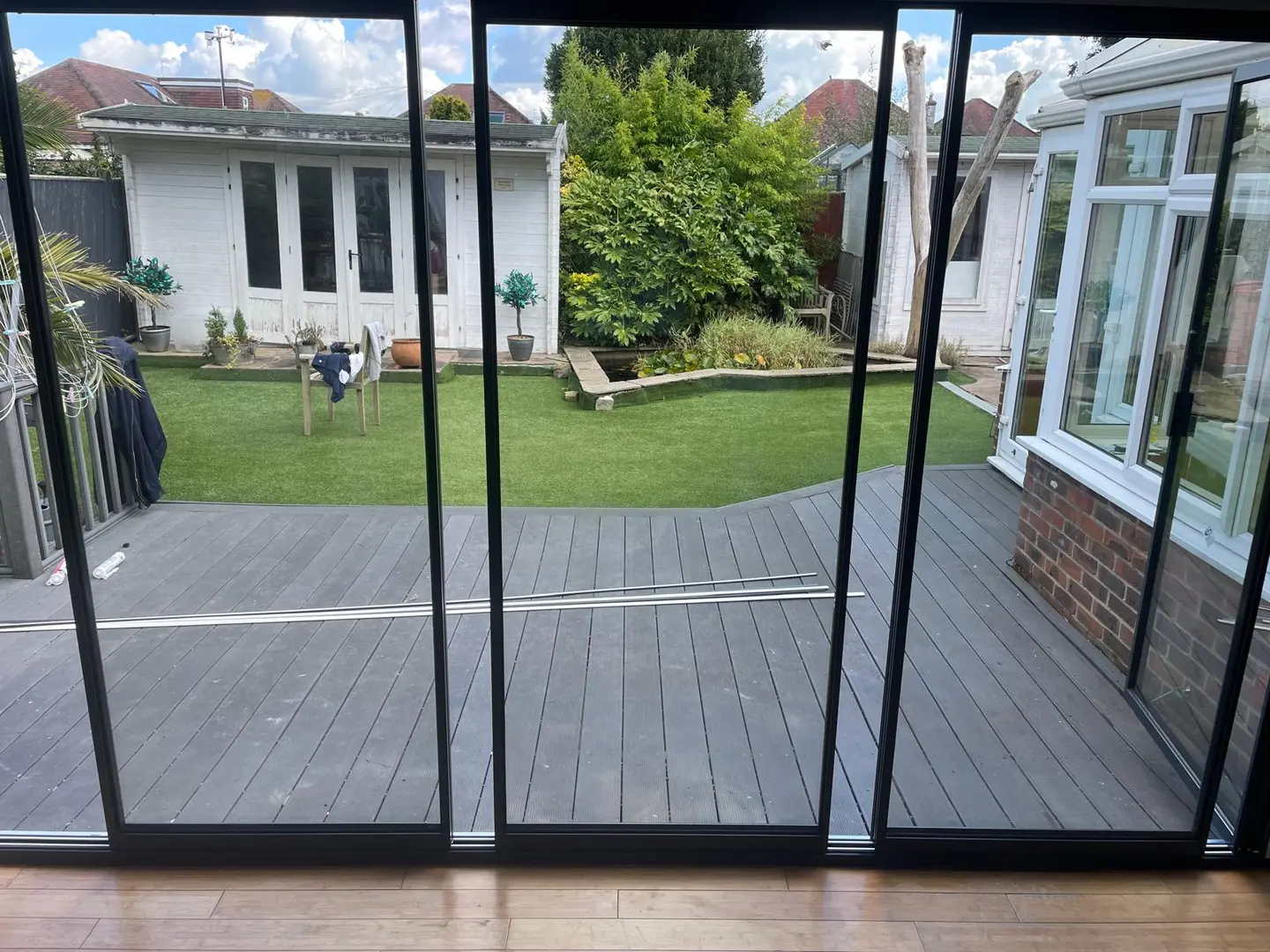
Frame Profiles
Metal sliding doors achieve their distinctive look through carefully engineered frame profiles. Thinner frames need stronger materials – steel allows for the slimmest sightlines, while aluminium requires slightly wider sections to achieve the same strength. Tall sliding doors may demand extra reinforcement to prevent bowing, yet modern engineering keeps the visual bulk minimal.
Internal aluminium sliding doors often use simpler profiles than external systems, since they don’t need thermal breaks or weatherproofing.
The reduced complexity allows for even slimmer frames, particularly suited to room dividers and wardrobe doors. These streamlined profiles work well in contemporary homes where minimal visual interference matters most.
Metal frames can incorporate hidden drainage channels and brush seals without compromising their clean lines. The precision of metal fabrication allows for complex internal geometries that manage water run-off and air flow while maintaining structural integrity. Modern metal sliding patio doors integrate these technical features invisibly, preserving their architectural impact.
Finish Options
Manufacturing techniques have expanded beyond traditional paint and powder coating. Metal finishes now include textured surfaces, metallic effects, and anodised layers that protect while adding visual depth. These processes bond molecularly with the metal surface, creating durable finishes that resist scratching and fading.
Surface treatment choice changes how metal sliding doors interact with light throughout the day. Brushed finishes scatter reflections, reducing glare while maintaining a subtle sheen. Polished surfaces bounce light deeper into rooms but show fingerprints more readily. Textured coatings hide minor scratches and provide tactile interest.
Custom Finishes
Specialist finishing techniques can replicate bronze patinas or weathered steel effects without the maintenance issues of natural materials. These processes give internal doors the industrial aesthetic many homeowners seek, while avoiding rust or oxidation. The finishes maintain their appearance regardless of humidity or handling.
Glass Options
Glass specification balances multiple factors: thermal performance, sound reduction, security, and visual clarity. Metal frames support heavier glass units than other materials, allowing for triple glazing or acoustic lamination without compromising the operation. Self-cleaning coatings work particularly well with metal frames, as the rigid structure maintains proper drainage angles.
Low-iron glass removes the slight green tint found in standard glazing, showing true colours through large panes. This clarity becomes particularly important in metal sliding doors where the glass surface area dominates the visual impact. Solar control coatings manage heat gain while maintaining neutrality, avoiding the mirror effect of traditional tinted glass.
Decorative glass options range from subtle sandblasted patterns to digitally printed designs. These techniques add privacy without sacrificing natural light, particularly useful in internal doors between living spaces. The strength of metal frames allows for oversized art glass panels that become architectural features in their own right.
Hardware Integration
The precision possible with metal allows for sophisticated hardware integration. Magnetic catches, soft-close mechanisms, and multi-point locking systems fit within the frame profiles without visible fixings. Handle designs range from minimal finger pulls to architectural statement pieces, with finishes matched exactly to the frame coating.
Metal sliding doors benefit from advanced bearing systems that carry substantial weights smoothly. Bottom-running tracks support larger panels while keeping top frames minimal, though some designs use concealed top-hanging systems for a cleaner floor detail. Precision manufacturing ensures these mechanisms maintain their smooth operation over years of use.
Lock mechanisms in metal frames provide excellent security through multiple engagement points and anti-lift features. The inherent strength of metal allows for robust locking components without bulky visible reinforcement. Modern systems include options for electronic access control, integrating seamlessly into home automation systems while maintaining clean aesthetics.
Interior Design with Metal Sliding Doors
The architectural presence of metal sliding doors shapes the character of living spaces through their interaction with light, materials, and scale.
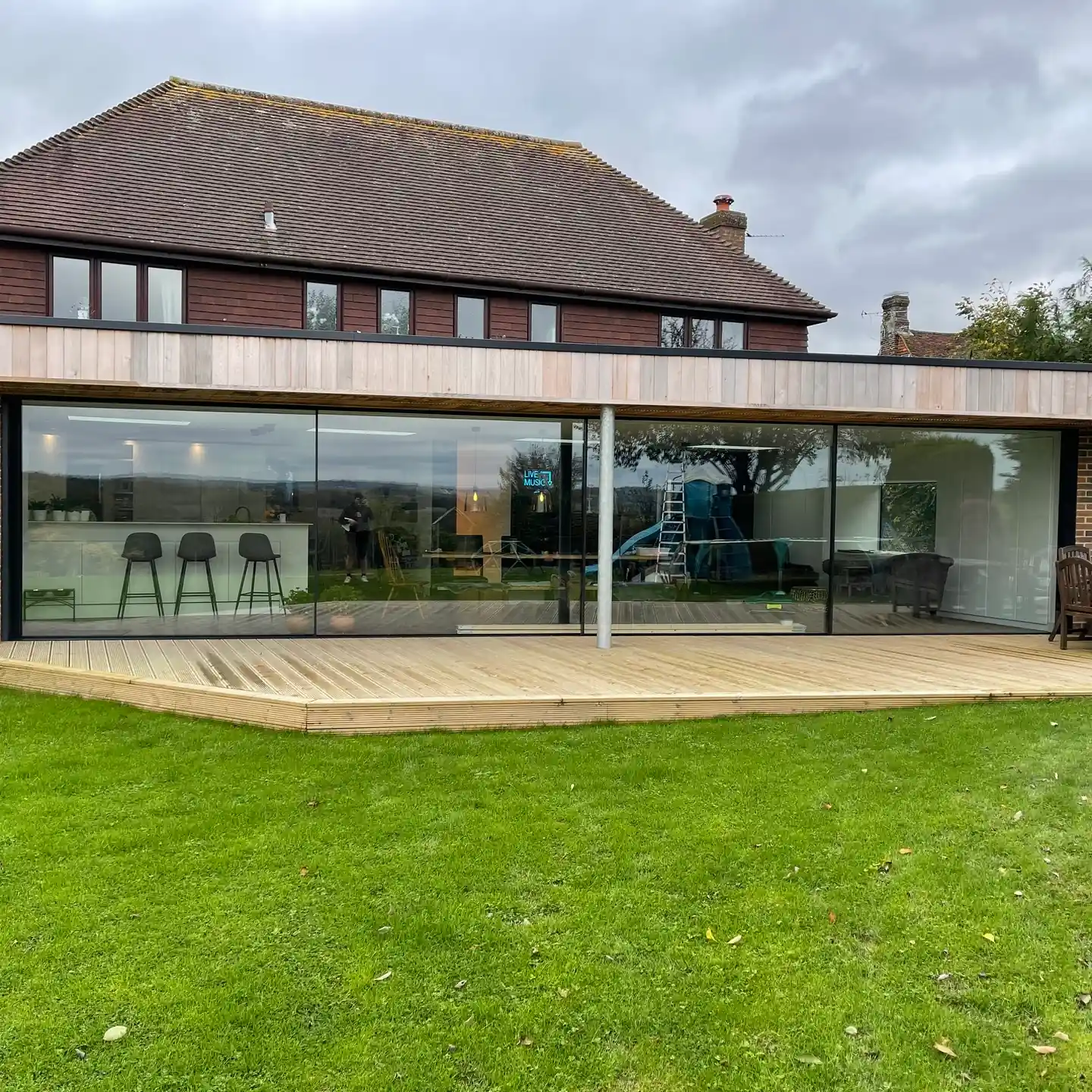
Colour Schemes
Black metal sliding doors create strong visual statements that anchor room designs. Dark frames work exceptionally well against pale walls, drawing attention to views while framing the space. The growing popularity of black sliding doors reflects wider trends toward industrial aesthetics in residential design, particularly in converted warehouses and modern extensions.
Paint colours near metal frames need careful selection to prevent clashing undertones. Warm greys and soft whites complement most metal finishes, while bold colour choices can turn metal frames into striking design features. Heritage aluminium doors often come in deep greens, blacks, and blues that reference traditional steel windows, offering modern performance with period authenticity.
Metal sliding glass doors reflect and filter natural light differently throughout the day. Morning sun might cast latticed shadows from frame divisions, while evening light creates subtle reflections on metallic surfaces. This interplay demands thoughtful placement of artwork and mirrors to avoid unwanted glare or competing reflections.
Lighting Techniques
Strategic lighting placement brings out the best in metal frames. Popular approaches include:
- Recessed ceiling lights positioned to wash down frame surfaces
- LED strips integrated into floor channels to highlight threshold details
- Wall lights mounted to emphasise frame profiles after dark
- Subtle spotlights angled to avoid direct reflection on glass
Artificial lighting needs careful positioning around metal patio doors to prevent nighttime reflections from turning glass into mirrors. Outdoor lighting schemes should focus light away from glazing, maintaining clear views out while creating inviting exterior scenes. Dimmable systems offer flexibility as natural light levels change.
Window Treatments
The clean lines of metal sliding doors demand equally refined window dressings. Wave-headed curtains on ceiling-mounted tracks preserve sight lines when open, tucking neatly behind side returns. Sheer fabrics soften metal frames without hiding their character, while adding privacy during daylight hours.
Blinds mounted within the reveal maintain the architectural detailing of metal frames. Side-guided systems prevent movement in breezes when doors stand open, while motorised controls integrate with home automation for convenient operation. Solar shading fabrics reduce heat gain while preserving views, particularly valuable in south-facing installations.
Material Selection
Fabric choices near metal sliding doors should complement rather than compete with frame finishes. Natural materials like linen and wool add textural interest without overwhelming the architecture. Metal hardware on curtains and blinds works best when matched or deliberately contrasted with door frames – mixing metallic finishes requires careful consideration to avoid jarring combinations.
Furniture Placement
Room layouts should respect the operation zones of metal sliding doors while taking advantage of their architectural impact. Seating arrangements might focus toward garden views in summer, then reorient around fireplaces in winter. Low-backed furniture prevents visual obstruction of glazing while maintaining comfortable viewing heights when seated.
The strength of metal frames allows for larger panels, reducing visible divisions in views outside. Furniture placement can draw attention to these uninterrupted views by creating clear sight lines through the space. In smaller rooms, reflections in glass panels can make spaces appear larger when furniture is thoughtfully positioned.
Material Combinations
Natural wood flooring warms the industrial character of metal frames, while polished concrete offers contemporary contrast. Wall textures like exposed brick or textured plaster provide background interest without competing for attention. The durability of metal frames pairs well with other hardwearing materials in high-traffic areas.
Stone flooring flowing from inside to exterior spaces reads as one continuous plane when divided by minimal metal threshold details. This visual continuity works particularly well with corner opening systems where the frame presence almost disappears. Careful material selection ensures the focus remains on spatial quality rather than individual elements.
About SunSeeker Doors
With over 20 years of experience, SunSeeker Doors remains at the forefront of door design with our quality-tested patio doors and related products, including the bespoke UltraSlim aluminium slide and pivot door system, Frameless Glass Doors, and Slimline Sliding Glass Doors. All of our doors are suitable for both internal and external use.
To request a free quotation, please use our online form. You may also contact 01582 492730, or email info@sunseekerdoors.co.uk if you have any questions.



